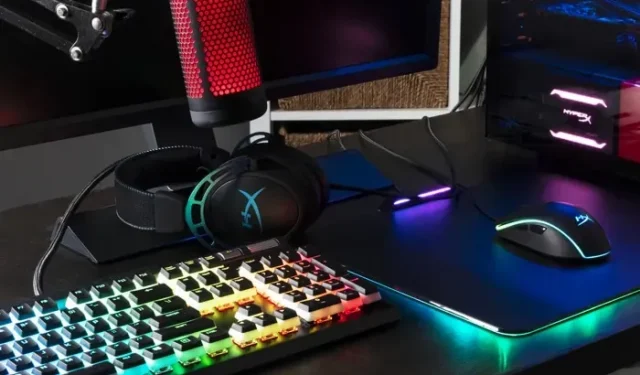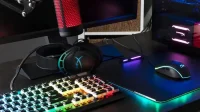So, you’ve recently come across mechanical keyboards and been surprised by their outrageous price or fell in love with the way they look. But before you form an opinion about this computer peripheral, I encourage you to stay and learn more about it.
The keyboard acts as an intermediary between you and your computer. If your job requires you to type for long hours, choosing the best tool for your profession is easy, and mechanical keyboards feel better than their counterparts available on the market. However, they require a learning curve. With that said, let’s learn more about mechanical keyboards.
Mechanical and membrane keyboards
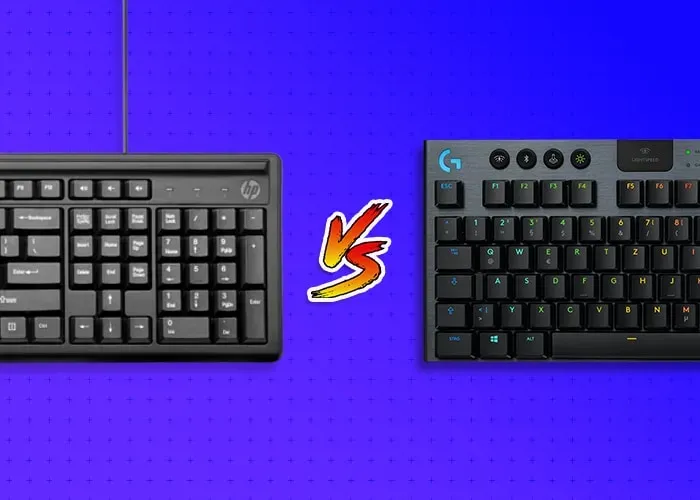
Computers these days offer high-end features without breaking your budget. At one time, personal computers were expensive, and companies supplied reliable peripherals. And that is why mechanical keyboards were popular at the time.
Reducing costs with peripherals is now ubiquitous, and this is one of the reasons why membrane keyboards have largely replaced mechanical keyboards. Read on for a detailed description of how both membrane and mechanical keyboards work and their respective benefits.
How does a membrane keyboard work?
All keys of the membrane keyboard are connected to the central push panel and demonstrate the normal functioning of the circuit. The pressure pad is further divided into three layers; the top and bottom layers are made up of conductive tracks and are separated by a third layer, known as the spacer, which has holes wherever there are keys.

The circuit closes and a keystroke is registered whenever you press a key. Membrane keyboards provide little to no tactile feedback. In addition, pressing multiple keys at the same time leads to problems such as ghosting.
However, membrane keyboards are much cheaper to produce, more resistant to water and dust, and can be easily repaired by replacing pressure pads.
How does a mechanical keyboard work?
Unlike membrane keyboards with a single keypad, mechanical keyboards have separate switches for each key. Each switch contains a spring that, when pressed, allows the metal contacts to connect and complete the circuit, while registering a keystroke.
Source: keymouse
These switches fall into three categories: linear, tactile, and clicky switches (more on that later). As the names suggest, these switches provide better feedback than membrane keyboards and you’ll never run into ghosting issues as each keystroke is registered individually.
Mechanical keyboards are very popular among gamers and programmers because they are precise and pressure sensitive. In addition, users don’t have to press every key to register it, which helps them type faster.
Key sounds are another aspect that sets mechanical keyboards apart from their counterparts. And while it’s a controversial topic, I’m on the end of the spectrum that likes how their keyboard sounds.
Mechanical keyboard components
As mentioned earlier, mechanical keyboards have a modular structure. While most of us will buy a pre-made mechanical keyboard and not mess around with it, knowing its components will be helpful. Here is a list of all components:
- Keyboard cover
- printed circuit board
- plate
- Switches
- Stabilizers
- Keycaps
Among all the above components, switches are the one you interact with the most and they play a crucial role in defining your experience. This is because switches come in many different types; they determine travel time, actuation force, and tactile feedback.
Mechanical keyboard switch function
Hundreds of mechanical key switches are readily available on the market, and you can also customize the switches to your liking. However, these switches fall into three main categories i.e. linear, clicky and tactile. Before discussing these switches, let’s focus on the components that make up a switch and how it works.
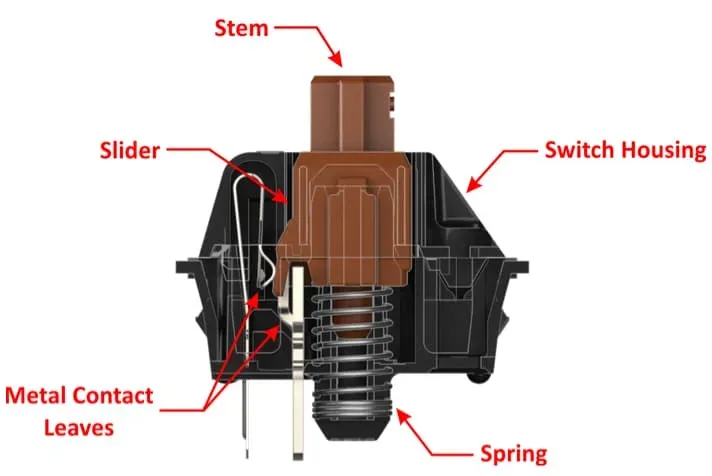
Source: keymouse
Switch body: The switch body covers all parts of the switch.
Stem: The cap is mounted on the stem outside of the switch housing.
Slider: The slider rests on the spring and presses against it. It also blocks the connection of metal contact plates on both sides.
Metal contact plates: The metal contact plates complete the circuit when the slider is pressed down and both contact plates touch.
Spring: The spring determines the required force. It wraps around the bottom of the slider.
Types of Mechanical Key Switches
I hope the above section has helped you understand how the switch works. As mentioned earlier, there are three categories of radio buttons; Linear, Tactile, and Clicky, and the standard colors that represent them are red, brown, and blue, respectively.
Linear switches
Let’s start with my favorite linear switches. These are the smoothest switches because they don’t have tactile feedback. Gamers generally prefer these switches as they have the shortest travel and lightest actuation force.
Source: keymouse
Also, line switches don’t feel soft like membrane keyboards. Cherry MX Red switches are the industry standard for linear switches.
clicky switches
Flip switches are the most polarizing type of switch of all. You either hate them (or the people living with you) or love them. And that’s because Clicky switches are the loudest mechanical switches. They have a tactile punch combined with a loud click of audio feedback.
Source: keymouse
If you want something that reminds you of a typewriter, Clicky switches are the right choice. Cherry MX Blue switches are the industry standard for Clicky switches.
Tactile switches
Then we have tactile switches that offer the best of both worlds. These switches offer a push like clicky switches without audible feedback. In addition, the bulge helps you type faster as it signals that a keystroke has been registered.
Source: keymouse
Cherry MX Brown switches are the industry standard for tactile switches. If you remember, mixing red with a little blue makes brown. See the correlation?
Various form factors and layouts of mechanical keyboards
Are you overwhelmed by the choices you get with mechanical keyboard switches? I’m sure the various form factors and layouts of mechanical keyboards have further confused you.
But I’m here to save the day, and here’s what you need to know about the various form factors and layouts of mechanical keyboards.
- Full size: 100% or full size keyboards are keyboards with a dedicated number pad and 104 keys.
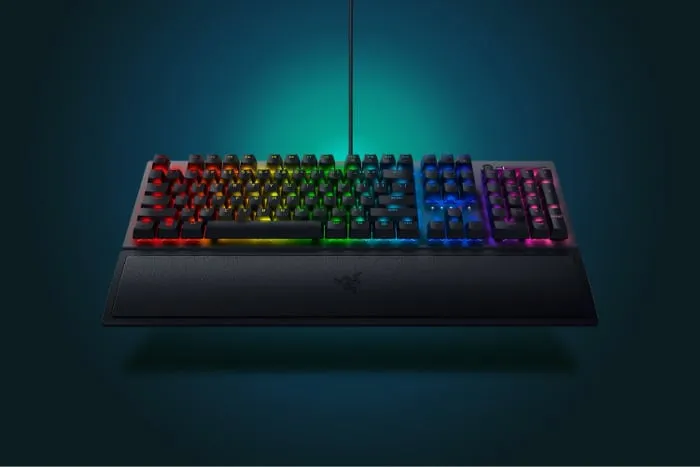
- TKL (Tenkeyless): 80% of TKL keyboards are similar to full-size keyboards, except they don’t have a dedicated numeric keypad. TKL keyboards have 88 switches.
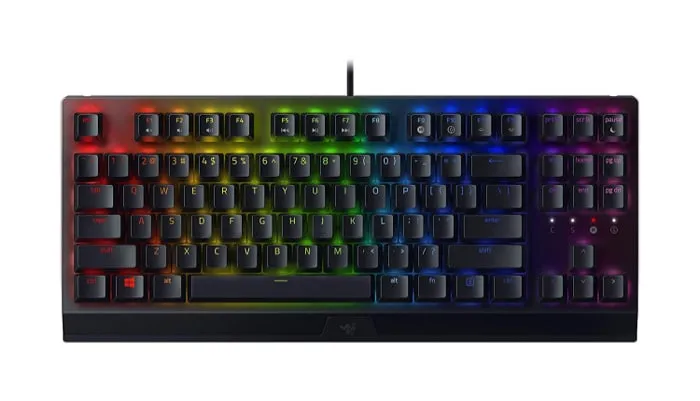
- 75%: If your laptop doesn’t come with a dedicated numeric keypad, this is probably the 75% layout. The 75% layout is similar to the TKL but has less space and fewer switches. It comes with 84 switches.
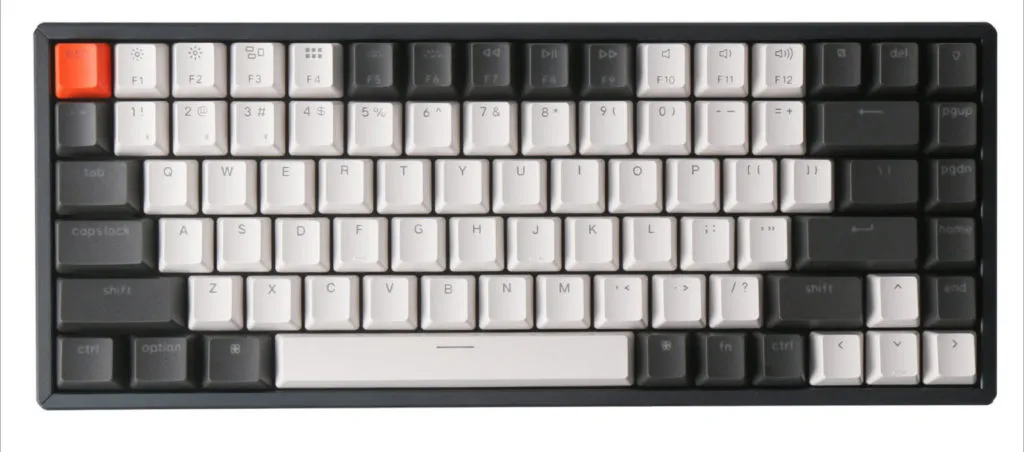
- 60%: Function keys, navigation keys, and numeric keypad are missing from the 60% layout. These keyboards come with 61 switches.
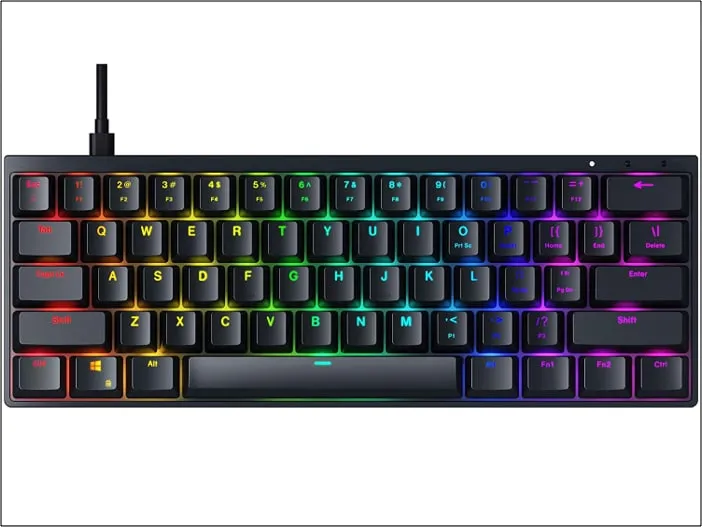
Mechanical keyboards are also available in other form factors such as 40% form factor, split keyboard, Ortho keyboard, etc. However, they belong to a niche market and are not as affordable as the options listed above.
Standard layouts for mechanical keyboards or keypads are typically ANSI, ISO, or JIS. ANSI is the most popular keyboard layout used in the US. The ISO layout is widely known and used in European countries, while the JIS layout is used in Japan.
What is the best mechanical keyboard for you?
The best way to choose the right switches for your first mechanical keyboard is to visit the stores and check out which keyboard you prefer. However, if you don’t have access to a physical store, you can order some sample switches and try them out. Go to MechMap for a complete list of all vendors worldwide.
Now you’ve decided which switches to purchase, but aren’t sure about the keyboard’s form factor? There are no hard and fast rules for this. It all comes down to your personal preference and what you primarily use the keyboard for.
Below are some use cases, along with information on which keyboard and switches are most comfortable for these users. However, it will help you make an informed decision and choose the keyboard form factor you prefer.
General use
Tired of typing on a laptop and want a replacement in the same form factor? The 75% keyboard is the perfect replacement as it has the same layout as your laptop keyboard. Tenkeyless is also a good choice, but it does take some getting used to. However, it has the fewest compromises.
However, if you need a dedicated numeric keypad, the only choice is the full-size keyboard. Or you can get any keyboard and an extra number pad to pair with.
Games
If gaming is your top priority, a full-sized keyboard or a keyboard with a 60% screen size will suit you. Why did I write two different options? Primarily because full-sized gaming keyboards come with Macro and Media keys, which are useful for gaming.
Source: Optimum Tech.
In addition, 60% of the keyboard helps to reduce the space taken up by the keyboard and gives more room for the mouse. If you turn the keyboard to a different angle during the game, it will easily fit even in tight spaces. And for those who do not need macro and multimedia keys, a 60% keyboard will do.
FAQ
While membrane keyboards have a lifespan of 5 to 10 million keystrokes, mechanical switches are rated for 20 to 100 million keystrokes.
Keyboards that are built (mostly assembled) by enthusiasts according to their preferences are called custom mechanical keyboards.
I hope this article has helped you learn more about mechanical keyboards. Let me know which form factor or switch you like best. Also, if you have any other doubts, leave them in the comments below. I will do my best to help you.
